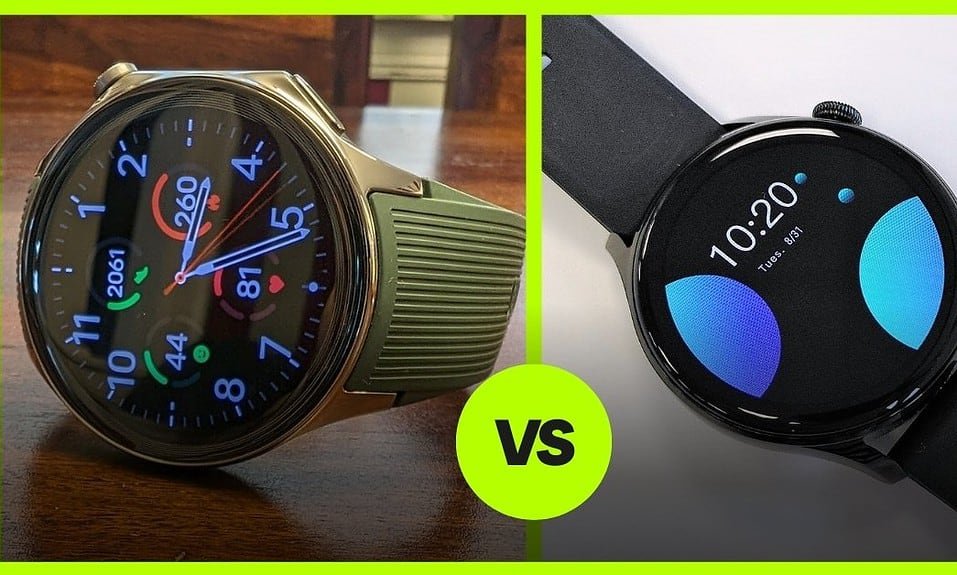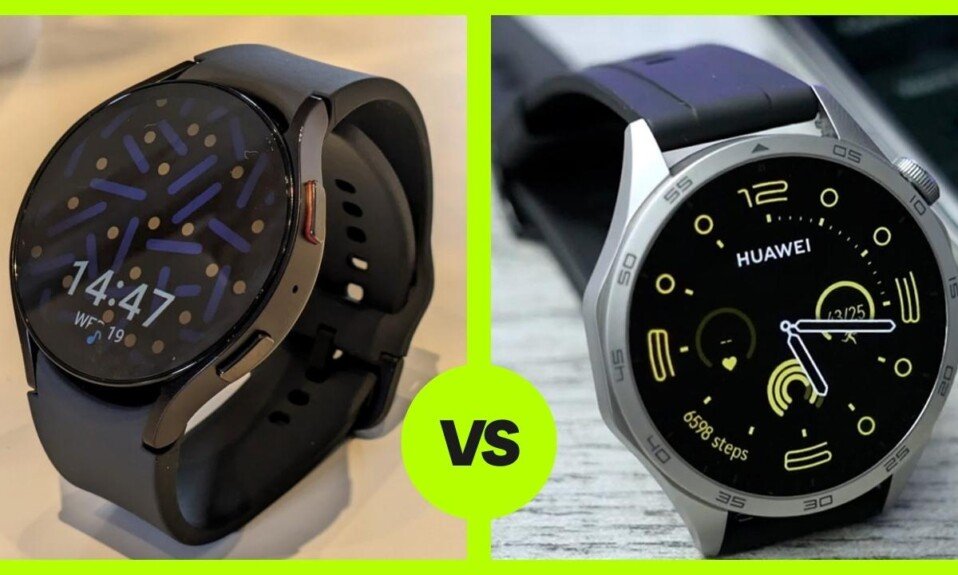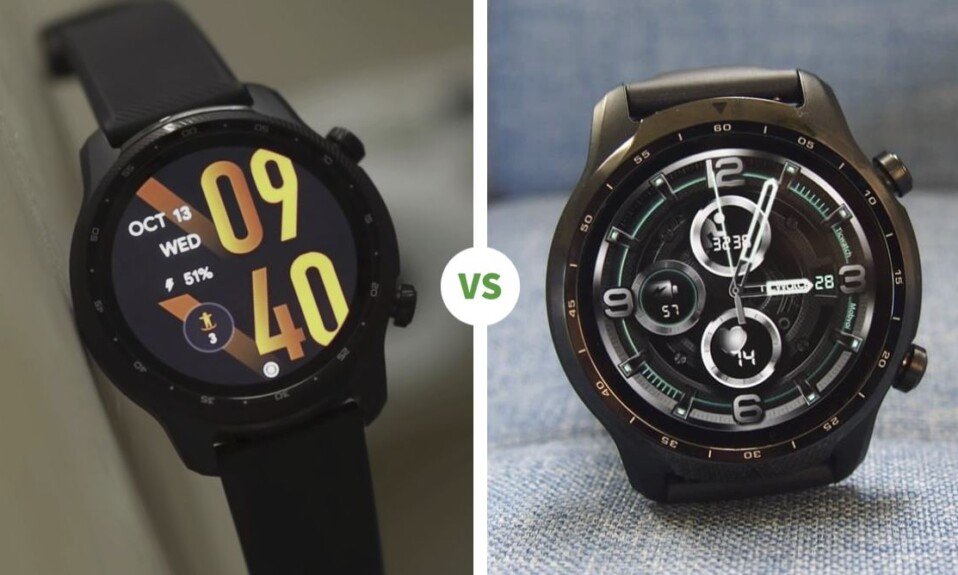Garmin Forerunner 265 vs Forerunner 965. When it comes to premium sports watches, Garmin is a leading brand that garners much attention. Two of its prominent models, the Garmin Forerunner 265 and the 965, are often compared by enthusiasts and athletes alike.
Both the Forerunner 265 and 965 are part of Garmin’s renowned sports watch series. However, the Forerunner 965 breaks tradition by incorporating titanium in its design, particularly in the bezel, giving it a more premium look compared to the entirely plastic build of the 265. Despite this, the 965 remains lightweight at 52g, only slightly heavier than the 265.
Table of Contents
Pros and Cons
| Forerunner 265 | Forerunner 965 |
|---|---|
| Dual size options (40mm and 44mm) | Premium build with titanium bezel |
| Affordable pricing | Massive 32GB of storage |
| Excellent Garmin Connect app | Excellent Garmin Connect app |
| 1.3 inch AMOLED display | Larger 1.4 inch AMOLED display |
| 13 days of battery life | 23 days of battery life |
| Lacks features like Garmin golf | Only available in 47mm size |
| 8GB of storage | No wireless charging |
| No solar option | No solar option |
Both watches are feature-packed and cater to a range of fitness and outdoor enthusiasts. If you’re pondering over which of the two is the right fit for you, this comparison will delve deep into the major differences between them.
Specifications: Forerunner 265 vs Forerunner 965
| Forerunner 265 | Forerunner 965 | |
|---|---|---|
| $ | CHECK PRICE | CHECK PRICE |
| Brand | Garmin | Garmin |
| Dimensions | 41.7 x 41.7 x 12.9mm | 47.1 x 47.1 x 13.2mm |
| Released | May 2, 2023 | |
| Display | 1.3 inches | 1.4 inches |
| Resolution | 416 x 416 pixels | 454 x 454 pixels |
| Weight | 47g | 53g |
| Touchscreen | Yes | Yes |
| Memory | 8GB | 32GB |
| Garmin Pay | Yes | Yes |
| Protection | Gorilla Glass 3 | Gorilla Glass 3 DX |
| Connectivity | NFC Bluetooth ANT+ Wi-Fi | NFC Bluetooth ANT+ Wi-Fi |
| Compatibility | Android and iOS | Android and iOS |
Key Points: Forerunner 265 vs Forerunner 965
Ultra Run Profile: Both models have an ultra-run profile, but the 965 has a unique “rest timer” feature that allows users to delineate rest periods during an ultra-run.
Mountain Bike Activity: While both have this profile, the 965 offers unique metrics called ‘grit’ and ‘flow’, measuring the difficulty of the terrain and the momentum maintained during the ride.
Golf Activity Profile: Only the 965 comes equipped with a detailed golf activity profile that offers a comprehensive map of golf courses worldwide.
Outdoor Activity Tracking: Both models can access various satellite systems, but the 965 stands out with its full-blown Topo landscape maps, which offer a more detailed view of the terrain.
Navigation: While both models support route imports, the 965 provides a richer map context. It also offers unique features like the ‘around me’ feature, next Fork feature, climb Pro, and dual grid coordinates.
Running Specific Features: Both models provide advanced running dynamics and a feature called Pace Pro. However, the 965 has an additional real-time stamina feature for monitoring energy during workouts.
Cycling Features: Both can connect to cycling power meters. The 965 has the Power guide, Advanced cycling Dynamics, and compatibility with Shimano di2, electronic cycling shifting, and muscle oxygen sensors.
Safety and Tracking: Both models offer safety features like live track and instant detection. However, only the 965 offers the group track feature.
Segments: The 965 also supports Garmin live segments and is compatible with Strava’s live segments.
Key Difference
AMOLED Screen: Both the Forerunner 265 and 965 now sport an AMOLED screen, which is also found in the Venu 2 series, making the colors more vibrant. This type of display is especially advantageous for indoor use or nighttime. However, when compared to the Mip screen, the AMOLED might not be as superior under intense sunlight.
Resolution and Size: The Forerunner 265 comes in two sizes: 42mm (Forerunner 265s) and 46mm, whereas its predecessor had sizes of 41mm (Forerunner 255s) and 46mm. The Forerunner 965 is available in a 47mm size, larger than the 46mm of its predecessor, the 955.
USB-C Charging: Both the Forerunner 265 and 965 now employ USB-C for charging. This is the first time Garmin has incorporated USB-C, which offers faster charging and is more universally used in recent electronic devices.
Training Load: Exclusive to the Forerunner 965, it introduces load training and training damage features. This feature enhances training analytics, helping athletes better understand their training efficiency and recovery needs.
Running Dynamics: Both the Forerunner 265 and 965 come with enhanced running dynamics. Users no longer need the additional Running Dynamic Pod accessory with these models as it’s now integrated.
Interface Update: With the AMOLED screen, both watches have a more modern, updated interface with additional animations. The updated interface is said to be more in line with the Epic series, offering a more modern and futuristic feel.
Build Material: Forerunner 265 and 265s: Fiber-reinforced polymer bezel with Gorilla Glass 3 shielding the display. Forerunner 965: Titanium bezel (replacing fiber-reinforced polymer) with a Gorilla Glass DX screen protector.
Music: Unlike the Forerunner 255 which had a separate music variant, the Forerunner 265 includes offline playlist support by default.
Storage: Both the Forerunner 265 models have 8GB storage, double that of their predecessors. The Forerunner 965 boasts a significant 32GB storage. Unlike its predecessor, it doesn’t come in a solar variant.
Battery Life: Forerunner 965: Up to 23 days in smartwatch mode and 31 hours in GPS mode. In contrast, the 955 lasted up to 42 hours in GPS mode and up to 15-20 days in smartwatch mode. Forerunner 265 and 265s: 13 and 15 days in smartwatch mode respectively, and 20 and 24 hours in GPS mode.
Connectivity: The new Forerunner 265 models feature Wi-Fi connectivity, a step up from their predecessors. They also support ANT, Bluetooth, and Garmin Pay.
Design and Size
Forerunner 965: Available in one size – 47.1mm.
Forerunner 265: Available in two sizes – 41.7mm (265s) and 46.1mm.
Forerunner 965: Larger screen by about 3mm.
Forerunner 265: Smaller in terms of dimensions by 1mm (46mm vs 47mm for the 965). Also available in an “S” version with an even smaller screen.
Weight: 965 is 5 grams heavier than the 265.
Material: 965 has a titanium ring, while the 265 has a bezel in reinforced polymer (resistant plastic).
Buttons: 965’s buttons have small drawings to indicate functions and “forerunner” writing on the side. 265’s buttons are simpler and seem to be of a slightly lower quality.

Size Variation: The 965 has one size variant at 47mm. The 265 provides more size options with a 46mm variant and a smaller 265s variant at 42mm.

Materials and Durability: The 965 comes with a more premium feel and protection thanks to its Titanium bezel. The 265 does not have this feature. Furthermore, the 965 is equipped with Gorilla Glass DX, which offers better resistance and lesser reflection than the Gorilla Glass 3 found on the 265.
Display Quality
Garmin introduces AMOLED displays in both models, offering brighter, more colorful, and higher contrast visuals than previous models. The Forerunner 965 comes with the highest resolution of all Garmin watches to date, with 454 x 454 pixels, compared to the 360 x 360 (265s) and 416 x 416 (265) pixels in the Forerunner 265 models.
Maps and Navigation
A major difference lies in navigation capabilities. The Forerunner 965 offers complete topographical maps with detailed features, while the 265 only provides breadcrumb navigation with less detail.
One of the most highlighted differences between the 265 and the 965 is the presence of maps. The 965 boasts of its mapping capabilities, akin to the top-end models like the Epix and the Fenix series. The 265, on the other hand, doesn’t have this feature.
Memory for Maps and Music
Forerunner 265: 8 GB of internal memory.
Forerunner 965: 32 GB of internal memory.
Storage Capacity
Storage plays a pivotal role if you want to load songs or maps onto your watch. The 965 dominates in this department with a 16GB capacity, capable of storing thousands of songs. In contrast, the 265 has a more modest 4GB, limiting you to roughly 500 songs.
Battery Life
Forerunner 265:
Smartwatch mode: 13 days
GPS only mode: 20 hours
GPS with maximum precision (Multi band active): 14 hours
Forerunner 965:
Smartwatch mode: 23 days
GPS only mode: 31 hours
GPS with maximum precision (Multi band active): 19 hours
When it comes to battery longevity, the 965 shines. With a potential battery life of up to 23 days, it eclipses the 265, which caps out at 13 days. Though actual battery performance might vary based on usage, the 965 promises to deliver at least two weeks of power on a single charge.
Metric Functions and Other Features
The 965 packs several features not present in the 265:
Stamina in Race: Exclusive to the 965, it measures your stamina during a run.
Climb Pro: Useful during hikes or runs with elevation, it displays upcoming inclines to manage your pace better.
Automatic Rest in Ultra Marathons: A niche feature for ultra-marathon runners.
Training Load Ratio: Compares short-term and long-term training loads to track your progression.
Altitude and Heat Acclimatization: Helpful if you’re venturing into regions with different climatic conditions.
Live Strava Segments: Notifies you about nearby Strava segments and tracks your performance in real-time.
Health & Fitness Features
Both have Garmin’s 4th generation elevated heart rate sensor, track spo2 levels, stress levels, daily activity tracking, and sleep tracking.
Both offer HRV tracking, body battery, environment sleep tracking, and Morning Report feature.
Similar training and performance feedback.
Training & Performance Feedback
Both can estimate VO2 Max for running and cycling. Offer lactate threshold, race predictor, fitness age metric, training status, and training load focus.
965 has additional features: altitude acclimation, heat acclimation, and a new load focus feature.
Sport Profiles
Both track common activities like running, cycling, gym workouts, swimming, triathlon, skiing, and more. 965 has additional cycling profiles and outdoor recreation profiles such as backcountry skiing, kayaking, tennis, disc golf, indoor climbing, bouldering, and more.
Unique Features in Forerunner 965
Mountain Bike Dynamics (Grid and Flow).
Golf mode with pre-installed courses.
Advanced training load insights (chronic load and load ratio).
Altitude and heat acclimatization tracking.
Price
The Forerunner 265 and 265s are priced at $499, which is twice as much as the Garmin Venus SQ2. Meanwhile, the Forerunner 965 costs $599, which is $100 more than its predecessor.

These price hikes are justified by notable improvements like the increased storage capacity with offline music support in the 265 models, better build quality and battery life in the 965, and superior display quality in the Forerunner 265.
Conclusion! Forerunner 265 vs Forerunner 965
- Forerunner 965: Offers a larger screen, titanium ring, topographic maps, and longer battery life.
- Forerunner 265: Almost identical to the 965 in many aspects but at a lower price point. Ideal for those who don’t need the extra features of the 965.
The Garmin Forerunner 265 is an excellent watch for those who want solid fitness and smart features without breaking the bank. On the other hand, the 965, with its additional features and improved build, is perfect for those who desire top-tier functionality and are willing to pay a premium for it.
The Forerunner 265 boasts a metal bezel and is available in both 40mm and 44mm sizes. The Forerunner 965, however, steps up the luxury with a titanium bezel and comes in a singular size of 47mm.
Ultimately, the decision lies in how you plan to use the watch and which features are non-negotiable for you.




